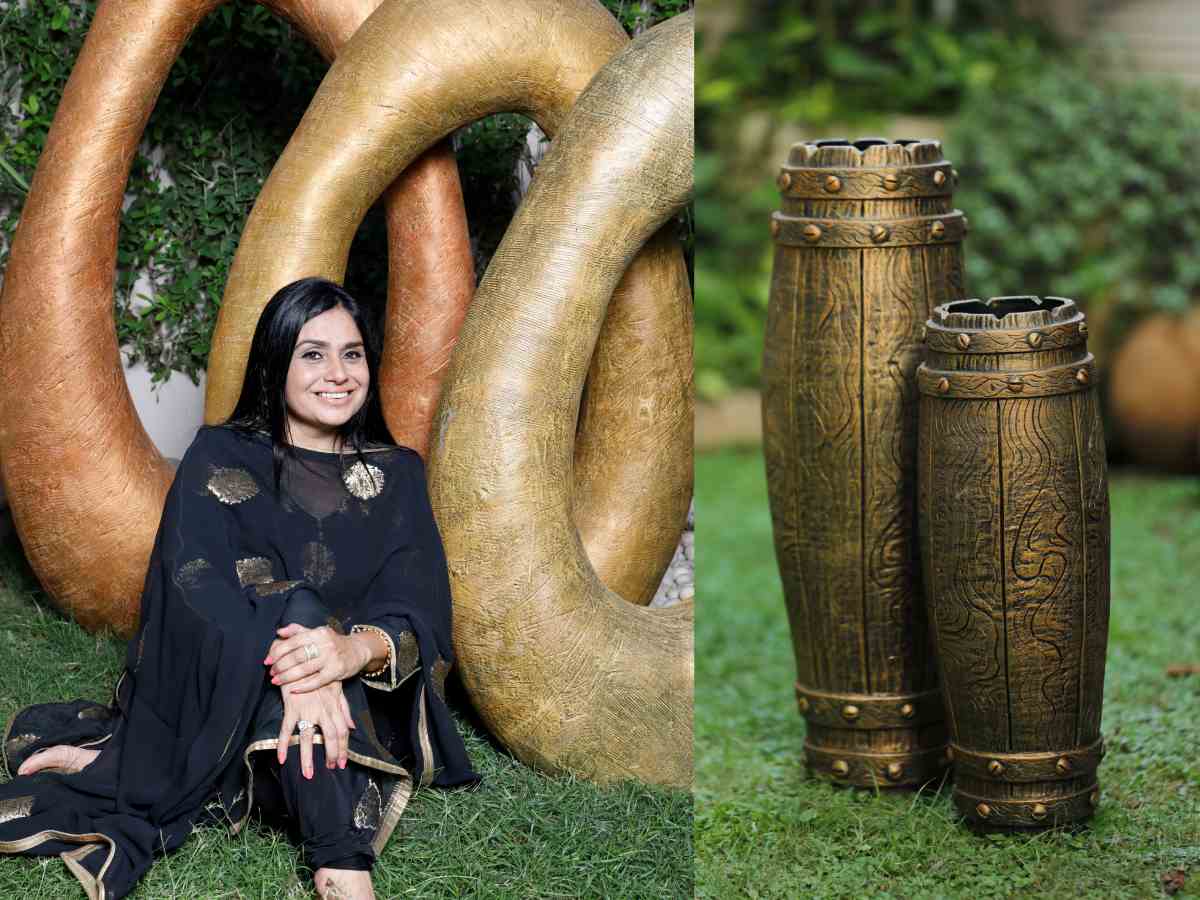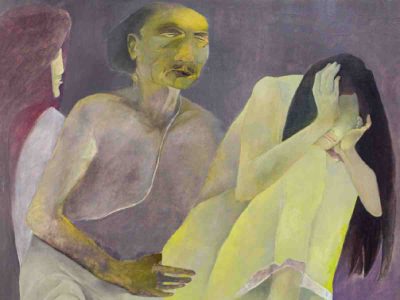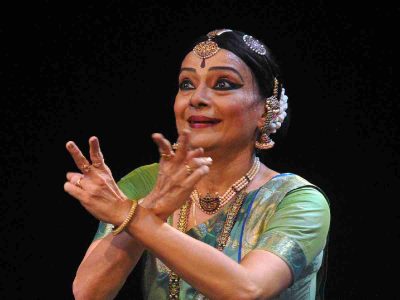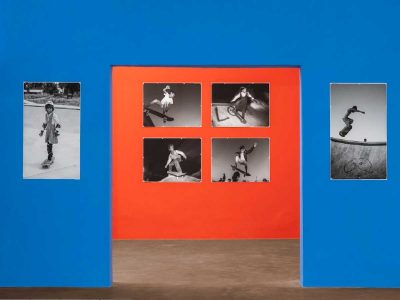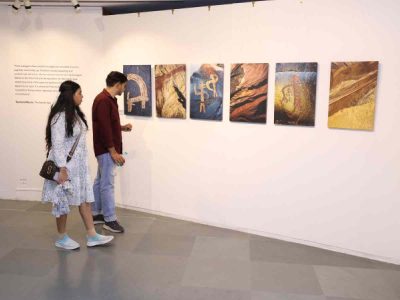Pottery artist Anju Kumar is well-known in the Delhi NCR region for her aesthetic and diverse use of pottery skills, creating artefacts that add a vibrant touch to any space, especially during the festive season. Stepping into her Gurugram studio, you’re immediately captivated by the stunning array of colours, shapes, sizes, and the sheer variety of beautiful artefacts on display.
Anju is preparing to unveil her latest collection through her upcoming art show, “Shakti,” at Studio Anmol, Gurugram, from October 6-11. This exhibit is a creative celebration of life, divine energy, and the eternal force that fuels all living beings.
“Shakti is the life force, our Prana, our fountain of creativity,” says Anju, explaining the inspiration behind the name of her show. “It’s about tapping into the energy of life itself, of the heart chakra, which represents the essence of our vitality and creative expression.”
Pottery, as an ancient art form, stands out for its unique flexibility and versatility. Clay, the primary medium, is soft and malleable, allowing artists to shape it with ease—much like moulding a new life. For Anju, this creative process, akin to nurturing a baby, is deeply connected to the act of creation itself. Pottery also holds historical significance, with ancient cultures using it for both functional and decorative purposes. Today, its eco-friendly nature adds to its appeal, evolving while remaining true to its timeless roots, offering exquisite and sustainable beauty in the modern world.
Also read: Delhi’s Travancore House to stage landmark celebration of abstractionist Bimal Das Gupta
With over 35 years of experience in pottery, paintings, and various artworks, Anju’s journey began with her first exhibition in 1990, and since then, she has had over 100 art shows. She says, “Working with clay has always been my first love, and although I am not a formally trained artist, learning through practical experience has given me the freedom to explore and create without boundaries. Throughout my career, I’ve evolved my techniques, experimenting with portraits, three-dimensional floral designs, and integrating clay with glass.”
Anju’s collection showcases myriad influences—from matted textures, muted tones, and an earthen palette, while exploring avant-garde shapes inspired by the oriental school of clay design. The earthy tones span from antique golds and oxidised silvers to vivid cobalts and ultramarine blues, creating a symphony of both rustic and vibrant expressions. Anju says that for this show, she has explored the concept of mandalas extensively, as she has always been fascinated by this art form. She explains that it has taught her that, like mandalas, life flows in perfect circles of energy, balance, and harmony. Doing abstract art like mandala patterns is something she enjoys, as the concept of fluidity— where art is interpreted according to one’s perspective—is both freeing and open to many interpretations.
Anju affirms that youngsters are increasingly showing interest in pottery, especially as the focus on mindfulness and mental well being grows. Pottery is being rediscovered as more than just an ancient art form—it’s seen as a therapeutic and creative outlet. The tactile experience of working with clay is calming, helping to release tension and promote peace. Many people find it meditative, often calling it a form of “clay therapy.”
While there were concerns about pottery vanishing due to industrialization and mass production, it’s now experiencing a revival. People appreciate its slow, hands-on process in contrast to the fast pace of modern life. Workshops, art studios, and even social media are helping to make pottery more accessible to younger generations, ensuring that the craft stays relevant and cherished. Its eco friendly nature and timeless beauty only add to its growing popularity
Anju informs, “Pottery became a lifeline for many, including me, during the COVID-19 pandemic. The act of working with clay offered a much-needed sense of calm amid the uncertainty. During those isolated times, pottery also fostered a sense of connection—to the earth, to ancient traditions, and to a creative community. The process of crafting something with my hands, watching it take shape, and seeing it through to completion gave me a profound sense of control and purpose. It was a form of therapy, helping me cope, stay grounded, and find peace in those challenging moments.”
Experimentation with different textures, mediums, and forms marks a key aspect of this year’s exhibition, where cold ceramics, resin, and terracotta merge to enhance the depth of the artistic experience. Another significant highlight of the show is the inclusion of timeless mandalas, which reflect the philosophy of impermanence and living in the present.
Also read: ‘Chitpur Chronicles’ in Hauz Khas: Rediscover Bengal’s sacred art through historic lithographs
“Living art is the core of this collection—pieces that are meant to be experienced within our homes,” says Anju. The exhibition will feature a broad range of pottery, including urns, vases, and intricately designed sculptures, alongside Ganeshas, Buddhas, and murals. Abstract contemporary artworks and murals serve as the standout highlights.
When: October 6-11; 11 AM-7 PM
Where: Studio Anmol, C-55a, South City 1, Gurugram

